Abstract
Saccharomyces bailii was isolated from two-thirds of the spoiled mayonnaise and salad dressing samples examined. Most of the rest were spoiled by Lactobacillus fructivorans. However, one sample contained large numbers of both S. bailii and L. plantarum. Two of the spoiled samples also contained small numbers of bacilli. Bacillus subtilis, B. pumilis, B. polymyxa, B. megaterium, and B. licheniformis were found in one sample and B. subtilis and B. pumilis in another. Small numbers of B. subtilis and B. licheniformis were also present in one unspoiled sample. Several media were evaluated for the isolation of L. fructivorans. S. bailii and L. fructivorans vigorously fermented glucose. The concentration of glucose in the spoiled samples ranged from 0 to 38.5 g/kg and from 1.3 to 17.8 g/kg for the unspoiled samples.
Full text
PDF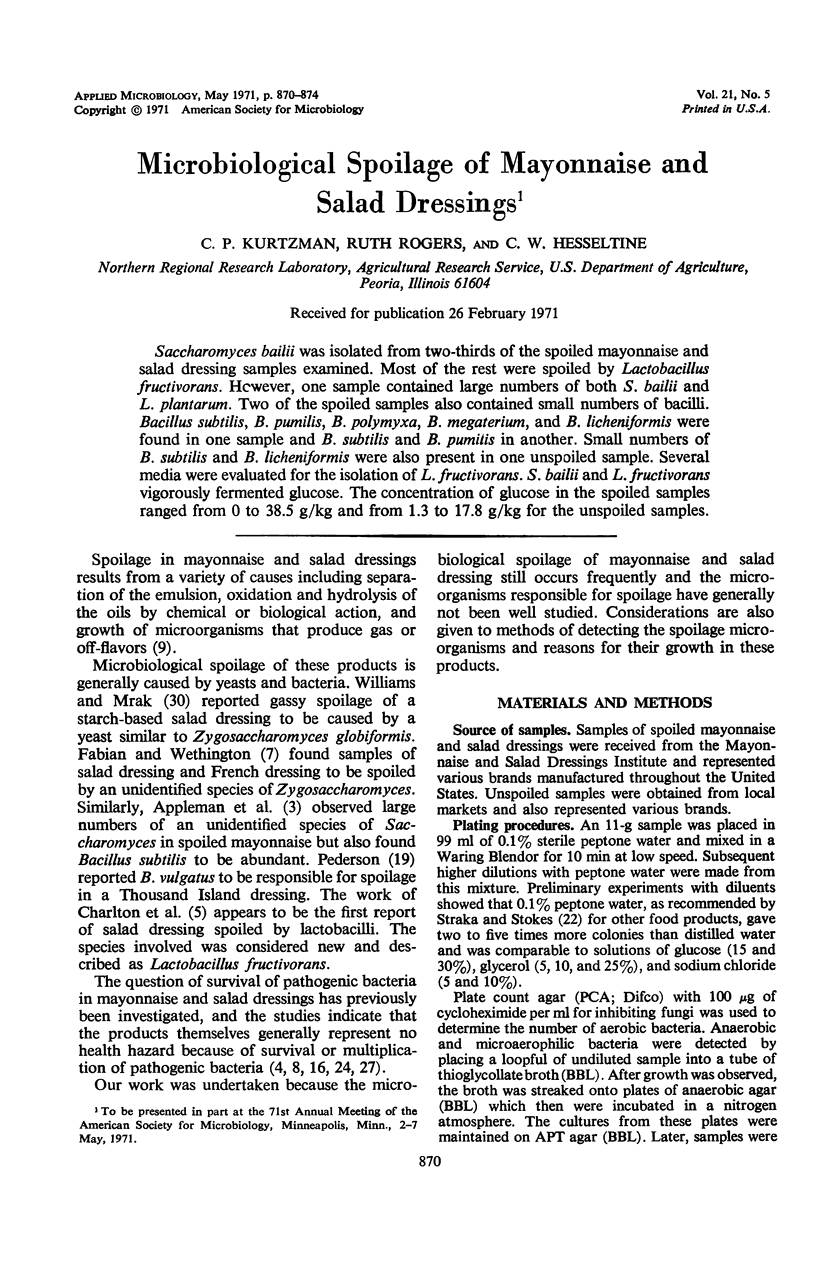
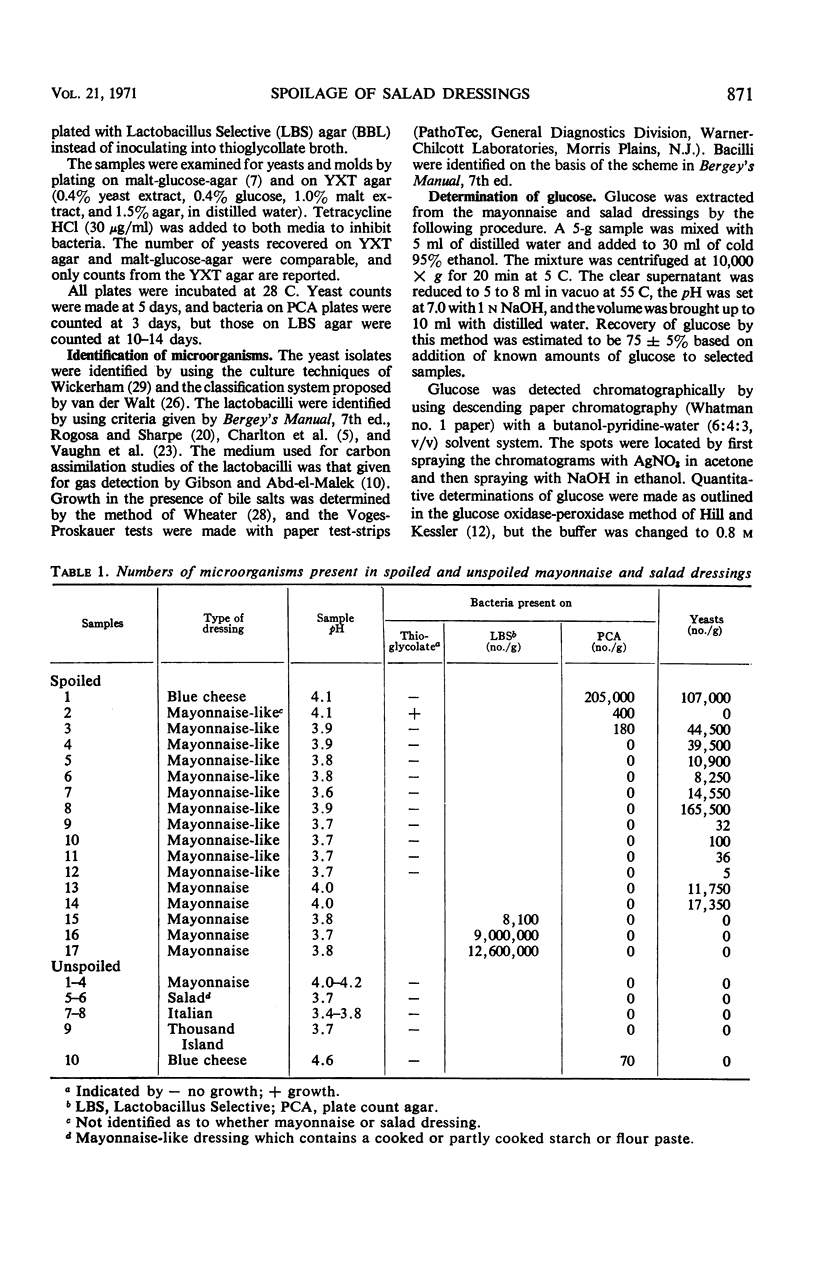
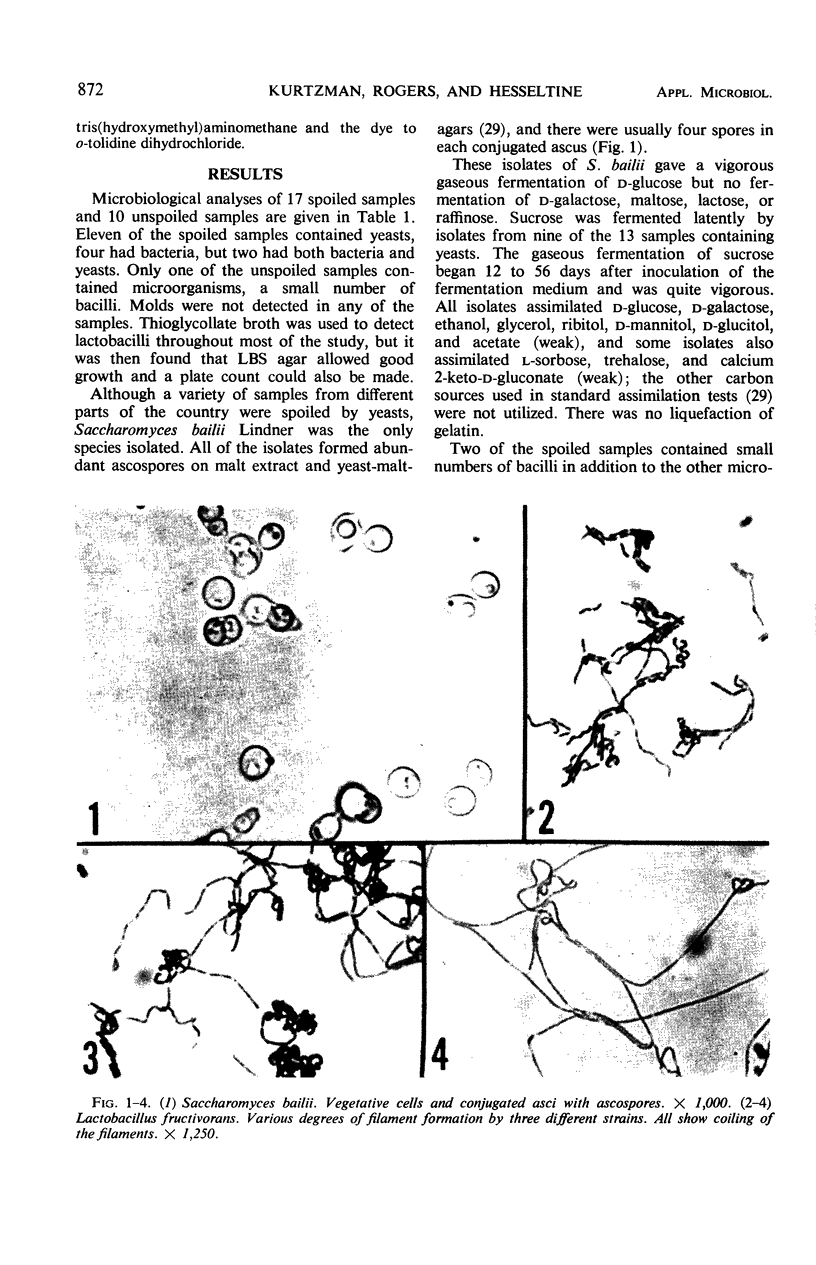
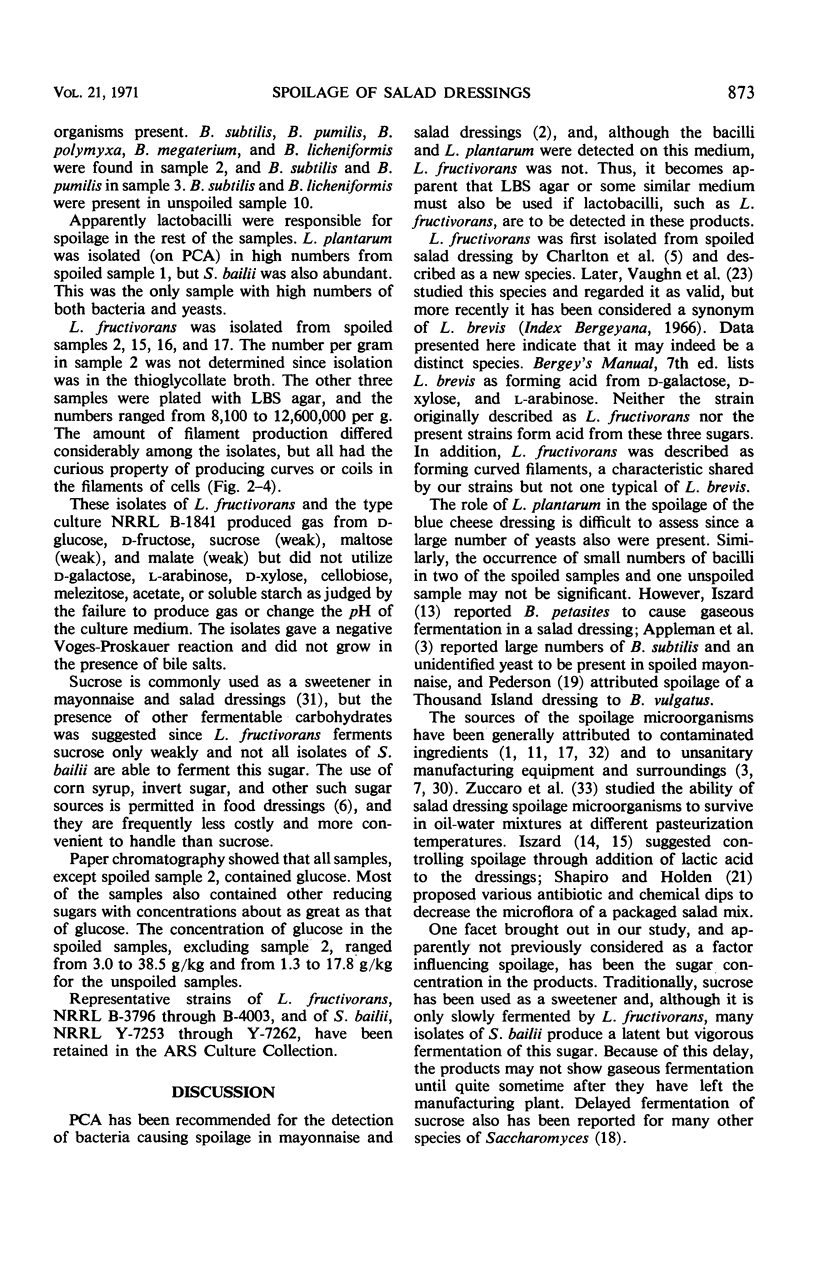
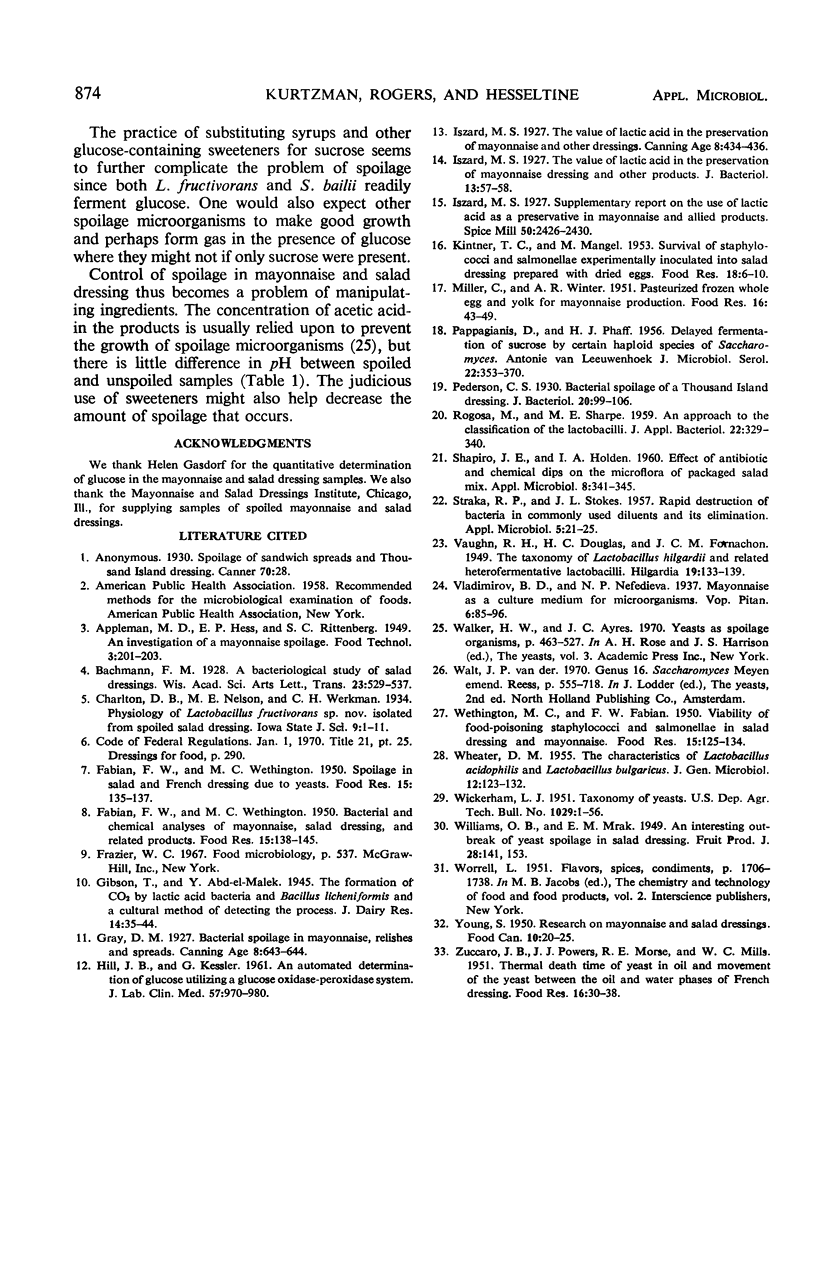
Images in this article
Selected References
These references are in PubMed. This may not be the complete list of references from this article.
- FABIAN F. W., WETHINGTON M. C. Bacterial and chemical analyses of mayonnaise, salad dressing, and related products. Food Res. 1950 Mar-Apr;15(2):138–145. doi: 10.1111/j.1365-2621.1950.tb16460.x. [DOI] [PubMed] [Google Scholar]
- FABIAN F. W., WETHINGTON M. C. Spoilage in salad and French dressing due to yeasts. Food Res. 1950 Mar-Apr;15(2):135–137. doi: 10.1111/j.1365-2621.1950.tb16459.x. [DOI] [PubMed] [Google Scholar]
- HILL J. B., KESSLER G. An automated determination of glucose utilizing a glucose oxidase-peroxidase system. J Lab Clin Med. 1961 Jun;57:970–980. [PubMed] [Google Scholar]
- MILLER C., WINTER A. R. Pasteurized frozen whole egg and yolk for mayonnaise production. Food Res. 1951 Jan-Feb;16(1):43–49. doi: 10.1111/j.1365-2621.1951.tb17347.x. [DOI] [PubMed] [Google Scholar]
- PAPPAGIANIS D., PHAFF H. J. Delayed fermentation of sucrose by certain haploid species of Saccharomyces. Antonie Van Leeuwenhoek. 1956;22(4):353–370. doi: 10.1007/BF02538349. [DOI] [PubMed] [Google Scholar]
- Pederson C. S. BACTERIAL SPOILAGE OF A THOUSAND ISLAND DRESSING. J Bacteriol. 1930 Aug;20(2):99–106. doi: 10.1128/jb.20.2.99-106.1930. [DOI] [PMC free article] [PubMed] [Google Scholar]
- STRAKA R. P., STOKES J. L. Rapid destruction of bacteria in commonly used diluents and its elimination. Appl Microbiol. 1957 Jan;5(1):21–25. doi: 10.1128/am.5.1.21-25.1957. [DOI] [PMC free article] [PubMed] [Google Scholar]
- Shapiro J. E., Holder I. A. Effect of Antibiotic and Chemical Dips on the Microflora of Packaged Salad Mix. Appl Microbiol. 1960 Nov;8(6):341–345. doi: 10.1128/am.8.6.341-345.1960. [DOI] [PMC free article] [PubMed] [Google Scholar]
- WETHINGTON M. C., FABIAN F. W. Viability of food-poisoning Staphylococci and Salmonellae in salad dressing and mayonnaise. Food Res. 1950 Mar-Apr;15(2):125–134. doi: 10.1111/j.1365-2621.1950.tb16458.x. [DOI] [PubMed] [Google Scholar]
- WHEATER D. M. The characteristics of Lactobacillus acidophilus and Lactobacillus bulgaricus. J Gen Microbiol. 1955 Feb;12(1):123–132. doi: 10.1099/00221287-12-1-123. [DOI] [PubMed] [Google Scholar]
- ZUCCARO J. B., POWERS J. J., MORSE R. E., MILLS W. C. Thermal death times of yeast in oil and movement of the yeast between the oil and water phases of French dressing. Food Res. 1951 Jan-Feb;16(1):30–38. doi: 10.1111/j.1365-2621.1951.tb17345.x. [DOI] [PubMed] [Google Scholar]



